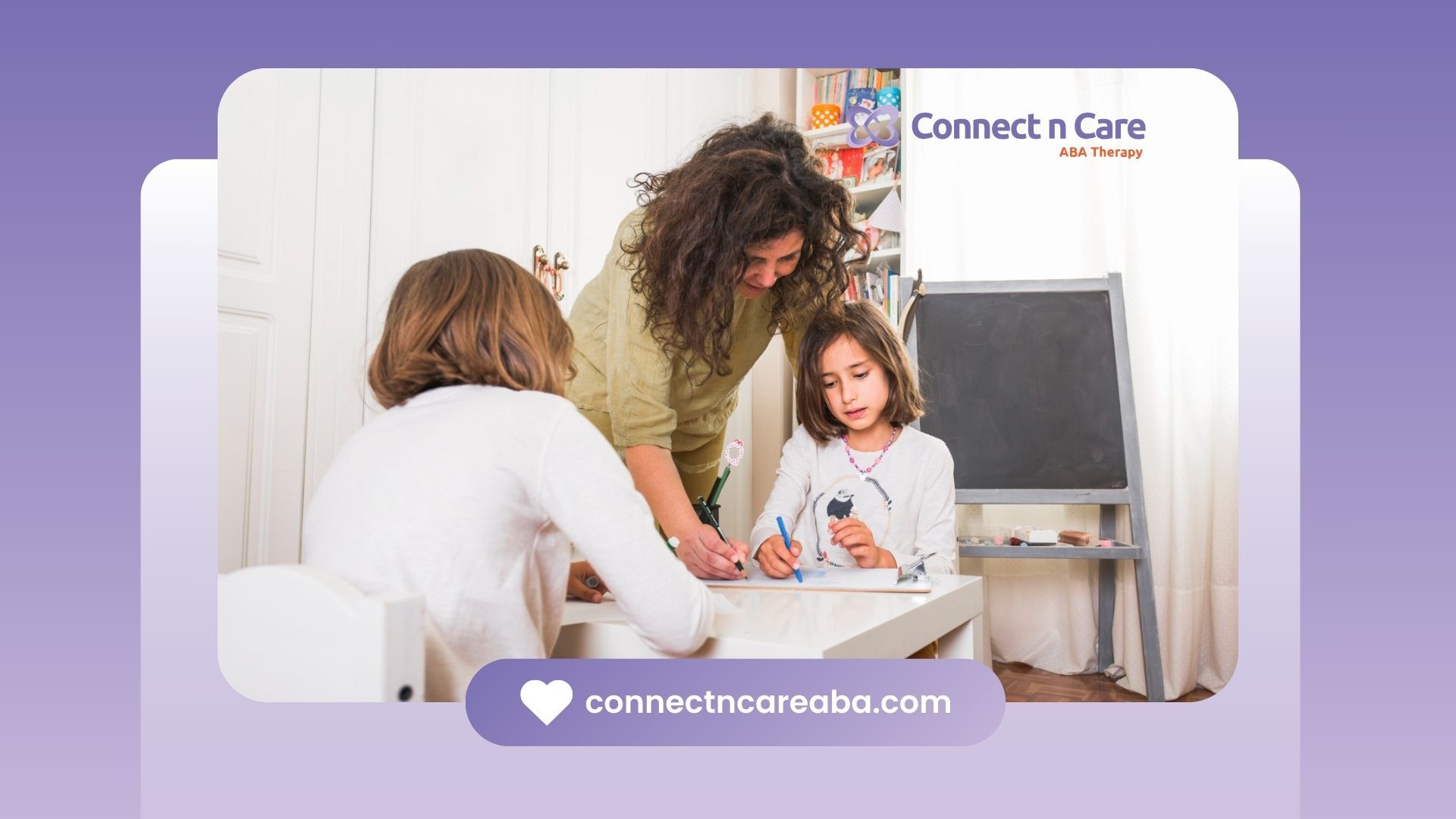Applied behavior analysis (ABA) therapy has brought hope to children with autism spectrum disorder (ASD). But what happens during these therapy sessions? This article will explain the exciting activities in ABA therapy. It will help parents and caregivers better understand this effective approach. We will look at the main ideas behind ABA and see how these ideas turn into fun and helpful ways to support your child's growth and development.
Understanding ABA Therapy
ABA therapy is not just a set of methods. It is a science based on how behavior works and how we learn. Think of it as a guide to help create positive changes. Experts in applied behavior analysis watch your child closely. They find behavior patterns, create ways to boost good behaviors, and lower the challenging ones.
The key part of ABA therapy is breaking tough skills into smaller steps. This helps your child learn and control these skills more easily. Therapists also use positive reinforcement. They celebrate successes and give rewards to motivate your child and support progress every step of the way.
The Basics of Applied Behavior Analysis
At its heart, applied behavior analysis (ABA) is based on the science of learning. It is a smart way to find out why people act the way they do and how those actions can be changed. Just like scientists do experiments, ABA therapists use facts and data to see what makes your child act in certain ways and what helps them learn.
By closely watching how your child reacts in different situations, therapists can find the best ways to help them improve. This process keeps going in a loop of checking, planning, doing, and reviewing. The approach is always made to fit your child's unique needs.
Think of ABA therapists as learning detectives. They look closely at your child's actions and reactions to uncover their special learning style. With this information, they can make a learning plan that helps your child succeed.
How ABA Therapy Supports Children with Autism
Children on the autism spectrum often have special challenges with communication, social skills, and everyday tasks. ABA therapy is a helpful support that guides these children. It helps them feel more confident and independent in their world. ABA therapy uses behavior analysis principles to teach children with autism important skills. These skills include expressing their needs, understanding social cues, managing daily routines, and building meaningful relationships.
Think of ABA therapy as a bridge. It connects what your child can do now with the skills they need to succeed. The goal is not to change who they are but to give them the tools to interact comfortably and successfully with the world around them.
Through fun and engaging activities, ABA therapists create a safe space for your child. Here, they can work on their social skills, improve their communication, and grow their self-awareness. The aim is to help your child reach their full potential and lead a happy life full of connections and achievements.
Essential Components of ABA Therapy Activities
One of the best things about ABA therapy is that it is very personalized. Before starting, a certified behavior analyst (BCBA) will assess your child. This helps them understand your child's strengths, challenges, and preferences. Based on this assessment, they create an individual treatment plan. This plan is specially made for your child's needs.
As therapy continues, the BCBA will keep checking and adjusting the plan to make sure it works well. They will look at data often, work with parents and caregivers, and update the treatment plan to meet your child's changing needs. They will celebrate successes and tackle any challenges that come up.
Setting Goals for Each Child
Every child is special, and that includes their ABA therapy goals. The individual treatment plan acts like a map. It shows specific skills and behaviors to work on based on your child's needs and strengths.
These goals could be about improving communication skills. For example, learning to express wants and needs or having back-and-forth talks. They may also aim at improving social interactions, like starting play with other kids or understanding social cues.
No matter what the goals are, they are broken down into small, easy steps to help your child succeed from the beginning. Positive reinforcement is important. It makes the learning process fun with encouragement and motivation. Each milestone they reach is worth celebrating.
Monitoring Progress and Adjusting Strategies
ABA therapy is not the same for everyone. It needs to be checked and changed often. This makes sure the treatment plan works well and fits your child’s growth.
You can think of it like a back-and-forth discussion between the therapist, your child, and the information gathered during the sessions. By watching how your child reacts to different methods, therapists can see what is good and change things as needed.
This might mean teaching new skills, adjusting current methods, or focusing on new issues that come up. Being flexible is important. ABA therapists know how to change the treatment plan to help your child thrive and reach their full potential.
Popular ABA Therapy Activities Explained
Two common methods used in ABA therapy are Discrete Trial Training (DTT) and Natural Environment Training (NET). They have different styles but both are important for helping your child grow.
DTT offers a structured setting, usually at a table, where skills are taught in smaller, clear steps. NET makes use of your child's surroundings — like home, school, or community — to teach and practice skills in real-life situations.
Discrete Trial Training (DTT) for Skill Acquisition
Discrete Trial Training (DTT) is a clear method used in ABA therapy to teach new skills to children on the autism spectrum. This approach breaks down tasks into smaller steps. It also uses positive reinforcement to celebrate correct answers. By repeating these trials in a focused way, DTT helps kids learn important skills such as communication, social interactions, and daily living skills. This method is based on the science of learning. It is customized to fit each child's needs, making it a useful tool for gaining new skills.
Incorporating Natural Environment Training (NET) into Daily Activities
Incorporating Natural Environment Training (NET) into daily activities means fitting new skills into your child's everyday life. By adding skill-building tasks to familiar places and situations, learning feels more natural and works better. This method, based on Applied Behavior Analysis (ABA), helps make learning meaningful and fits your child's needs. Using NET in ABA therapy guarantees that the skills learned go beyond therapy sessions. This approach improves your child's overall quality of life.
Engaging ABA Activities for Home and School
The beauty of ABA therapy goes beyond just a therapist's office. It helps parents and teachers take an active role in their child's growth. You can easily add many fun ABA activities to your child's daily life at home and at school.
For example, you can turn a favorite board game into a way to build social skills. You can also use daily routines, like meals or bedtime, to practice communication. There are endless possibilities. Always remember, ABA is all about making learning fun and rewarding for your child.
ABA therapy activities are designed to promote learning, skill-building, and positive behavior in children with autism, tailored to their individual needs. Families searching for in home ABA therapy near me can benefit from activities conducted in a familiar environment, making it easier for children to practice and generalize skills in their everyday lives. From play-based learning to communication exercises, in-home therapy creates a supportive space for growth and meaningful progress.
Fun and Educational Games to Support Learning
Turn playtime into learning time. Use games picked by a behavior analyst. These games focus on specific skills while keeping things fun. Simple board games help your child learn to take turns, follow rules, and deal with winning and losing kindly.
Matching games help improve visual skills and problem-solving as your child looks for pairs and remembers where things are. Building blocks offer many chances to boost fine motor skills, spatial thinking, and creativity. Your child can build towers, bridges, and different structures.
It's important to pick games that match your child's interests and growth stage. This way, learning feels like a fun adventure, not a task. Always celebrate their wins, big or small. This will support positive behaviors and grow a love for learning.
Role-Playing Scenarios to Enhance Social Skills
Imagine a world where your child can easily play at the playground, make friends, and deal with social situations without worry. This is what role-playing in ABA therapy can do. Therapists set up real-life social situations in a safe space for your child to learn and practice important skills.
These role-playing scenarios can include things like ordering food at a restaurant, talking to a classmate, or solving a disagreement nicely. Through fun and structured play, kids learn how to understand social cues and respond in a good way. They build their confidence to handle social interactions better. With practice, children feel more skilled and confident. What once felt hard can become easier and even fun!
Conclusion
ABA therapy activities are very important for helping children with autism. They focus on teaching skills and improving social skills. It is crucial to set personal goals and check progress often for success. Using fun ABA activities at home and school can make learning enjoyable and effective. When you understand the basics of applied behavior analysis and use special strategies, your child can thrive and reach their full potential. If you are thinking about ABA therapy for your child, early help can be very useful. For more details or to find the right ABA therapy activities, just ask for advice.
As a leading ABA provider in North Carolina, Connect n Care ABA is dedicated to providing fun and engaging therapy sessions for children with autism spectrum disorder. Our experienced team of behavior analysts incorporates a variety of activities and games into personalized treatment plans to promote learning, skill development, and positive behavior. Choose Connect n Care ABA for compassionate, evidence-based care that makes ABA therapy a positive and rewarding experience.
Frequently Asked Questions
What Age is Appropriate to Start ABA Therapy?
When we talk about ABA therapy and children with autism, starting early is very important. It is best to start ABA therapy right after a child gets an autism diagnosis. Early intervention usually brings the best and longest-lasting changes. Still, it is never too late to start. A treatment plan can be made for children of any age.









